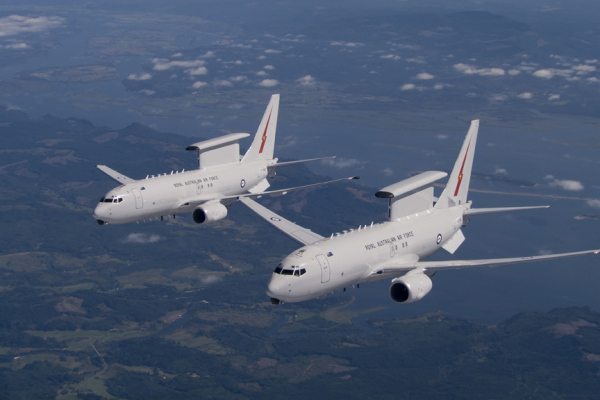Australia now has the most advanced air battle space management capability in the world, with the Royal Australian Air Force’s E-7A Wedgetail aircraft achieving Final Operational Capability.
The fleet of six Wedgetail aircraft reached the milestone this month with the entire capability, from physical aircraft to logistics, management, sustainment, facilities and training, now fully operational and able to support ongoing operations.
The Wedgetail has already proven to be highly reliable and effective on operations and this achievement will further Australia’s capabilities.
The E-7A Wedgetail is based on a Boeing 737-700, with the addition of an advanced Multi-Role Electronically Scanned Array (MESA) Surveillance Radar and 10 mission crew consoles, to create one of the most advanced pieces of technology for the Australian Defence Force.
Based at RAAF Base Williamtown, the six E-7A Wedgetails are capable of communicating with other aircraft and providing air control from the sky. They can cover four million square kilometres during a single 10 hour mission.
The E-7A Wedgetail represents an entirely new capability for the Australian Defence Force, providing an airborne early warning and control (AEW&C) platform that can gather information from a wide variety of sources, analyse it and distribute it to other air and surface assets.
Multi-Role Electronically Scanned Array (MESA) Surveillance Radar
Royal Australian Air Force Boeing 737-7ES Wedgetail AEW
By: Parabellum.Read more...
Pictures
The AEW&C airborne system combines the new high-performance Boeing 737-700 aircraft with the new technology Northrop Grumman Multi-role Electronically Scanned Array (MESA) radar. Included in the platform are an advanced Identification Friend or Foe (IFF) system; an expanded, passive electronic surveillance system; a flexible, open-system architecture and a highly effective self-defence capability.
The 737-700, which features state-of-the-art avionics, navigation equipment and flight deck, is the most popular and reliable jet aircraft in the world. Airlines and operators have ordered more than 5000 with more than 3100 having been delivered. This large in-service fleet is supported by a world-wide infrastructure of suppliers, parts and support equipment. With its speed, extended range and ability to fly to altitudes of more than 40,000 feet, the Next-Generation 737-700 offers an ideal airborne early warning and control platform.
Using the latest sensor technology, Northrop Grumman's 360-degree electronically steerable beam MESA radar is able to track air and sea targets simultaneously and can help the operator track high-performance aircraft while continuously scanning the operational area. More than 600 hours of wind tunnel testing have demonstrated the compatibility of the aircraft and the radar.
The 737 AEW&C platform, with its advanced technology and interoperability with the E-3 and 767 Airborne Warning and Control System (AWACS) aircraft, is designed to fill the airborne-surveillance needs of Australia and the world-wide market. Australia is the launch customer; the 737 AEW&C system has also been selected by Turkey and a number of other proposals are in varying stages of maturity.
For the Wedgetail Project, Boeing and Northrop Grumman are joined by BAE SYSTEMS Australia, who will provide the passive surveillance system, electronic warfare self-protect system, operational mission simulator (OMS), AEW&C support facility (ASF) and mission support segment (MSS).


No comments:
Post a Comment